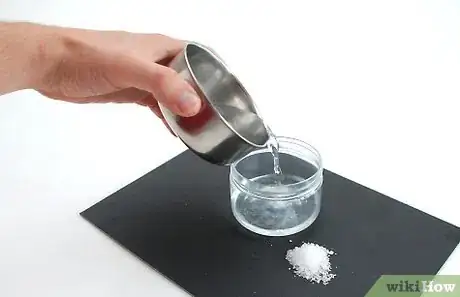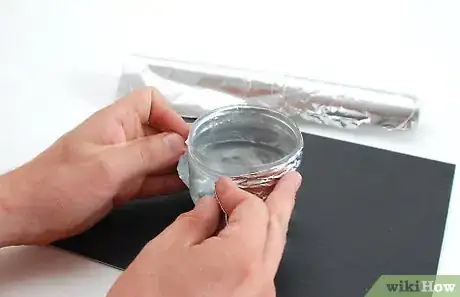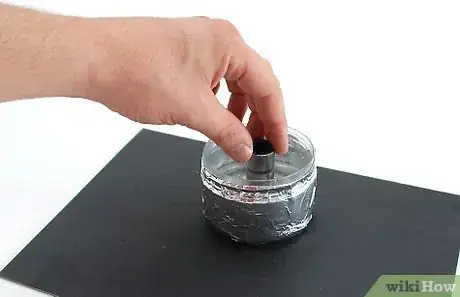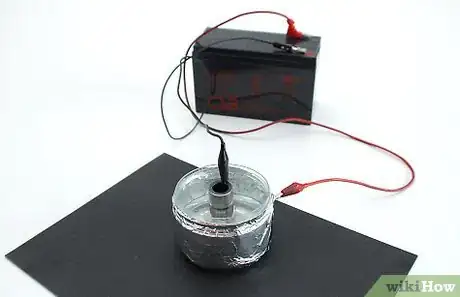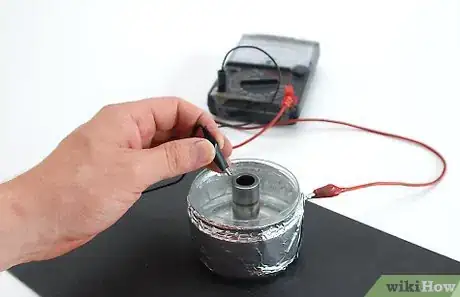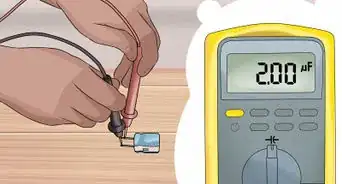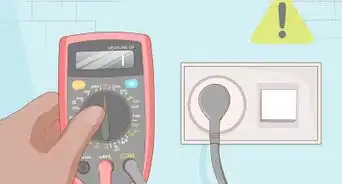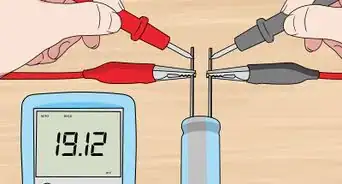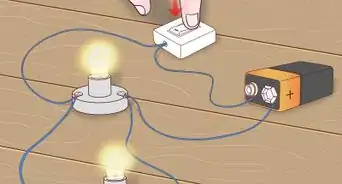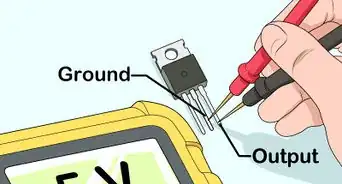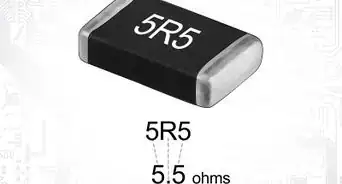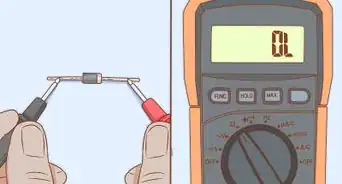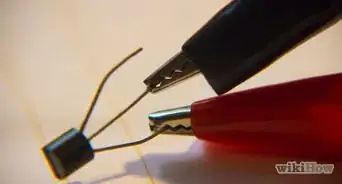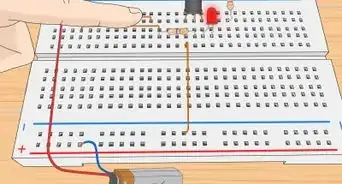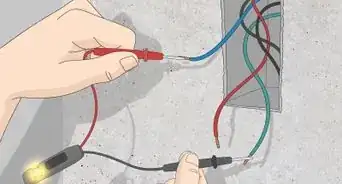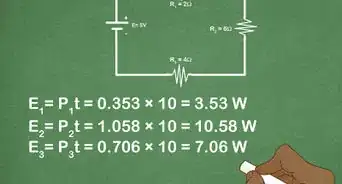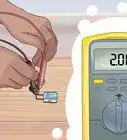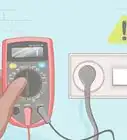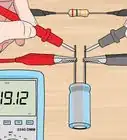X
wikiHow is a “wiki,” similar to Wikipedia, which means that many of our articles are co-written by multiple authors. To create this article, 11 people, some anonymous, worked to edit and improve it over time.
This article has been viewed 158,339 times.
Learn more...
Capacitors range from a simple, low-voltage setup to complex high-voltage machinery. If you just want to try your hand at making a simple capactior, our how-to guide will show you how!
Steps
-
1Fill a non-metallic vessel (such as a paper cup, or a plastic bottle) with warm saltwater. Use warm water to dissolve the salt.
-
2Wrap the outside of the vessel with aluminum foil, or tin foil.Advertisement
-
3Place a metal object (such as a knife, a nail, etc) in the saltwater. The foil is one terminal, and the water/metal object combination is the other. Do not allow the water or the metal object to touch the foil or spill over the side. This will short the capacitor and make it impossible to charge.
- Later you can use a voltmeter to verify if the capacitor can hold a charge.
-
4Charge it up, by applying the voltage from an ordinary household battery, to both terminals. After a few seconds disconnect the battery and connect the voltmeter to the terminals of the capacitor. Any reading (mV-V) will indicate a charge.
-
5Congratulations, you have a working capacitor, capable of holding an electric charge!
Advertisement
Community Q&A
-
QuestionWhat is the advantage of a salt water capacitor over a water capacitor?
 Community AnswerSalt water is more conductive than plain water, so it will hold a charge better.
Community AnswerSalt water is more conductive than plain water, so it will hold a charge better. -
QuestionDoes the capacitor have any specific polarity?
 Community AnswerSome do. Electrolytic capacitors have the polarity marked. Hooked up backward, they pop and let the magic smoke out. Other types are not polarity sensitive.
Community AnswerSome do. Electrolytic capacitors have the polarity marked. Hooked up backward, they pop and let the magic smoke out. Other types are not polarity sensitive. -
QuestionDo I need to wrap the bottom of the capacitor?
 Community AnswerNot necessarily. The capacitive effect occurs from the separation of the two plates (conductors). Not wrapping the bottom reduces the size of the plates (conductors), resulting in less capacitance, or a less capacitive effect, so you just have a smaller capacitor vs. the overall physical size of the unit that could have been utilized to maximize its energy potential.
Community AnswerNot necessarily. The capacitive effect occurs from the separation of the two plates (conductors). Not wrapping the bottom reduces the size of the plates (conductors), resulting in less capacitance, or a less capacitive effect, so you just have a smaller capacitor vs. the overall physical size of the unit that could have been utilized to maximize its energy potential.
Advertisement
Warnings
- Capacitors are very dangerous. Do not touch one after it has been charged by a power source, because it will shock you.⧼thumbs_response⧽
Advertisement
Things You'll Need
- Warm water
- Salt
- Non-metallic vessel (paper cup or plastic bottle)
- Aluminum or tin foil
- Metal object (knife or nail)
- Volt-ohm meter (optional)
- Battery
About This Article
Advertisement
